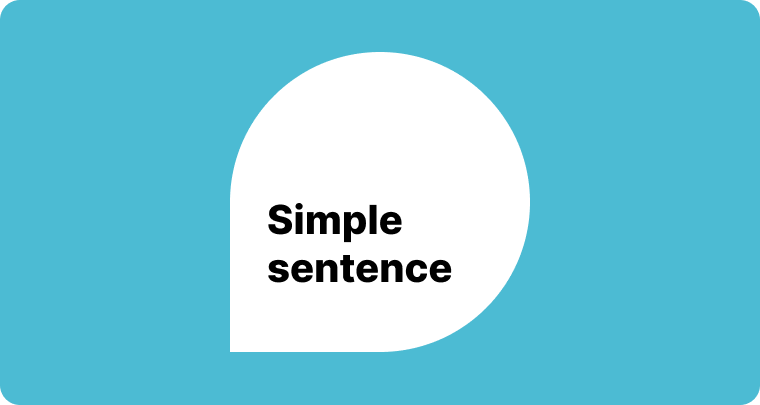
What Is a Simple Sentence?
Among the four fundamental sentence structures, the simple sentence is the most straightforward. It consists of just one independent clause and does not contain any dependent (subordinate) clauses. Despite this simplicity, simple sentences can vary in length and complexity. This guide will help you identify simple sentences and effectively incorporate them into your writing.
Simple Sentence Examples for Clarity
A simple sentence is made up of a single independent clause—a set of words that includes at least one subject and one verb, forming a complete thought—without any dependent clauses. Below are some examples where the simple subjects and verbs are highlighted:
My partner enjoys hiking.
The news report featured various eyewitness accounts.
Veterinary technicians assist veterinarians.
Even though these sentences include direct objects and prepositional phrases, they remain simple because they each consist of just one independent clause.
Why Use Simple Sentences in Writing?
Simple sentences serve as the foundation of English communication and offer various benefits. They are particularly effective for delivering clear and direct information:
The exits are located at the front and rear of the aircraft.
They can also be used to make strong, assertive statements:
This cannot continue.
You likely use simple sentences naturally in such situations. However, recognizing different sentence structures enables you to make deliberate choices that enhance your writing. Additionally, varying sentence structures helps maintain reader interest and engagement.
Constructing a Simple Sentence
A simple sentence must include at least a subject and a verb, but it may also contain additional elements such as direct or indirect objects and modifiers. The defining characteristic is that it consists of a single independent clause without any dependent clauses. Individual components within a simple sentence can be compound without affecting its classification. This means a simple sentence may have:
A compound subject: Bijal and Obsetee have worked at the same company for years.
A compound predicate: We ate outside and swam in the lake all week.
A compound indirect and direct object: My friend Jason gave me and my family airline miles and hotel points for our trip.
A longer yet structurally simple sentence: Before that day, neither the dog nor its owner had ever walked through the town or visited its outskirts.
Comparing Sentence Types: Simple vs. Complex, Compound, and More
Let’s distinguish simple sentences from the three other primary sentence types.
Simple vs. Compound Sentences
A simple sentence contains one independent clause, while a compound sentence has two or more independent clauses but no dependent clauses. For example:
Two simple sentences: We went to the concert. Afterward, we went to dinner.
Converted into a compound sentence: We went to the concert, and afterward, we went to dinner.
Simple vs. Complex Sentences
A complex sentence consists of one main independent clause and at least one dependent clause, joined by a subordinating conjunction. Consider the difference:
Simple sentence: Xan couldn’t make it to the party.
Complex sentence: Because they were feeling unwell, Xan couldn’t make it to the party.
Simple vs. Compound-Complex Sentences
Compound-complex sentences merge elements of compound and complex sentences. They contain at least two independent clauses and one dependent clause. Compare the examples below:
Simple sentence: Tomorrow is Monday.
Compound-complex sentence: Whether you’re ready or not, tomorrow is Monday, and we must go to work and school.
More Examples of Simple Sentences
She browsed online forums about tutoring.
The speaker’s voice fluctuated.
The freshly laundered shirt smells great.
They distributed flyers with the lost dog’s picture throughout the neighborhood.
My classmate grew up in Lagos, Nigeria.
Melly immediately recognized Vigo in the crowd.
🤔 FAQ Section
1. What is a simple sentence?
A simple sentence contains a single independent clause—just one subject and one verb—and expresses a complete thought. No dependent clauses. No drama.
2. Can a simple sentence be long?
Yes. It can be long and still be simple, as long as it contains only one independent clause. It’s not about size—it’s about commitment.
3. What can be included in a simple sentence?
A subject and a verb are required. But you can dress it up with direct or indirect objects, prepositional phrases, modifiers—just no dependent clauses crashing the party.
4. What are some examples of simple sentences?
- She eats breakfast.
- The cat sleeps on the bed.
- We walked home after school.
Minimal, clear, and grammatically sound—like a sentence that gets straight A’s.
5. How is a simple sentence different from other sentence types?
Unlike compound or complex sentences, a simple sentence is a solo act. No conjunction juggling, no subordinate shenanigans—just one thought, clearly expressed.
